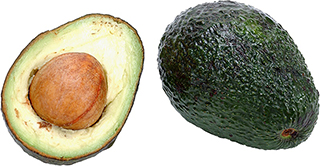August 12, 2014
 Breaking Down Fat: The Different Types
Breaking Down Fat: The Different Types
If you think avoiding fat all together is a good idea, think again. Research shows that not all fats are created equally when it comes to your health.
There are some fats that are good for you and some that are not. But don’t let fat weigh you down — here’s a handy guide to help you break down the types of fat you may be eating. Find out the good, the bad and the ugly to determine what these fats mean for your health and how to swap the harmful fats in your diet for healthier fats.
What is fat?
Dietary fat can come from both animal and plant products. Fat adds calories to the diet and provides energy to the body. It also helps the body to absorb fat–soluble vitamins, such as vitamins A, D, and E, which must be in the presence of fat to be utilized effectively by the body. When consumed in high quantities, fats can contribute to weight gain and obesity, because on a gram for gram basis, fats are higher in calories than proteins and carbohydrates.
Consuming certain types of fats has been linked with cardiovascular disease. According to the USDA’s 2010 Dietary Guidelines for Americans, for adults aged 19 and older, the total amount of fat in the diet each day should fall between 20-35% of the total food consumed. Following this guideline may lead to a decreased risk of developing cardiovascular diseases. Ultimately, any excess calories not used by the body for fuel are turned into stored fat regardless of the source – whether it’s fat, carbohydrates, or protein.
Cholesterol is a fat–like substance found in your blood. Your body makes cholesterol and it is also found in animal food products such as meats and cheeses. If you eat a lot of products that are high in cholesterol, cholesterol can build up in your blood vessels and lead to a blockage, preventing blood from getting to a certain area of the body. When this occurs in your heart vessels, it is called coronary heart disease and can cause a heart attack. In people with chronic kidney disease (CKD), heart disease is very common. It is suggested that people with CKD have cholesterol labs drawn at least once a year.
The Good
Unsaturated fats are considered good fats because they can lower the amount of bad cholesterol in the body (LDL), while increasing the amount of good cholesterol in the body (HDL). Unsaturated fats are termed “unsaturated” because there are fewer hydrogen atoms in each of these fat molecules. Unsaturated fats are typically liquid at room temperature making it harder for the molecules to pack together tightly like in solid, “saturated” fats. While the chemical makeup provides some context for how the fats got their names, it’s more important to remember that unsaturated fats are heart healthy and that they make good choices over other fats. Unsaturated fats are found in plant and fish products and there are two types of them: “monounsaturated fats” and “polyunsaturated fats”. Both of these are healthy fats and sources of unsaturated fats include peanuts, olives and olive oil, avocados, fatty fish such as salmon, almonds and walnuts.
The Bad
Saturated fats are found in animal–based products such as meat, cheese and other dairy products as well as some plant based products such as coconut and palm oils. The distinction is that the animal-based saturated fats also contain cholesterol, while the plant-based ones do not. Saturated fats are linked with heart disease and can be damaging to the body when consumed in large quantities, contributing to higher levels of LDL cholesterol in the blood. The saturated structure makes it easier for fat particles to stick together and form a solid at room temperature. Examples of these types of fats include butter and animal fat which is sometimes visible as the marble pattern in red meats.
The Ugly
Trans fats are considered the worst or most unhealthy in the fat family. This is because trans fats not only contribute to raising the amount of bad cholesterol (LDL) in the body, but they also have been shown to lower the amount of good cholesterol in the blood (HDL). This is considered to be a double whammy for your health because trans fats remove the good cholesterol that can protect the heart from damage while increasing the amount of damaging cholesterol. Trans fats are often used in restaurants for frying foods because they can be heated multiple times, making them a less expensive option compared with oils that need to be replaced frequently because they break down easily. Some cities and states ban using trans fats in restaurants. The terms “hydrogenated” or “partially hydrogenated” on a food package ingredient list usually indicate that trans fats may be present in this product. When oil is “hydrogenated”, hydrogen atoms are added to liquid fats during a chemical modification process. The fats then become solid or partially solid at room temperature. This hydrogenation process extends the shelf life of certain processed foods, but can damage the heart, leading to heart disease.
Heart disease is a risk factor for kidney disease and kidney disease is a risk factor for heart disease because the heart and kidneys are interconnected. While the heart constantly pumps blood throughout the body, the kidneys continuously filter the blood in order to remove waste products and excess fluid from the body. The filtration process of the kidneys is necessary to maintain a stable balance of body chemicals.
The kidneys also produce hormones that affect the function of other organs. For example, hormones produced by the kidneys stimulate red blood cell production and promote bone health. Other hormones help to regulate blood pressure. Damaged kidneys may release too much of these hormones, which can lead to high blood pressure. High blood pressure increases the risk of heart attack, congestive heart failure and stroke. It’s important to protect both your kidneys and your heart by choosing unsaturated, healthy fats, over saturated and trans fats.

















